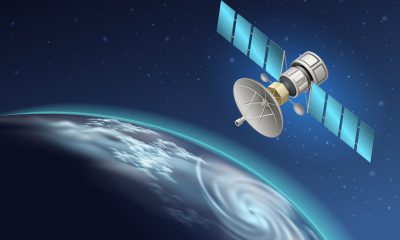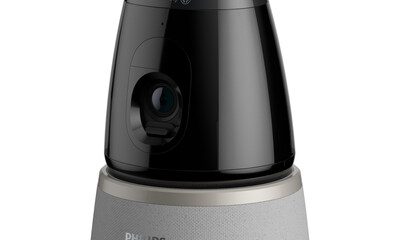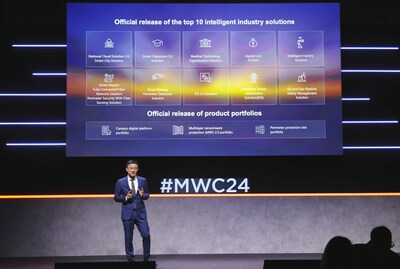Health
How to Choose the Right SPF – Sunscreen Tips for the Aussie Climate
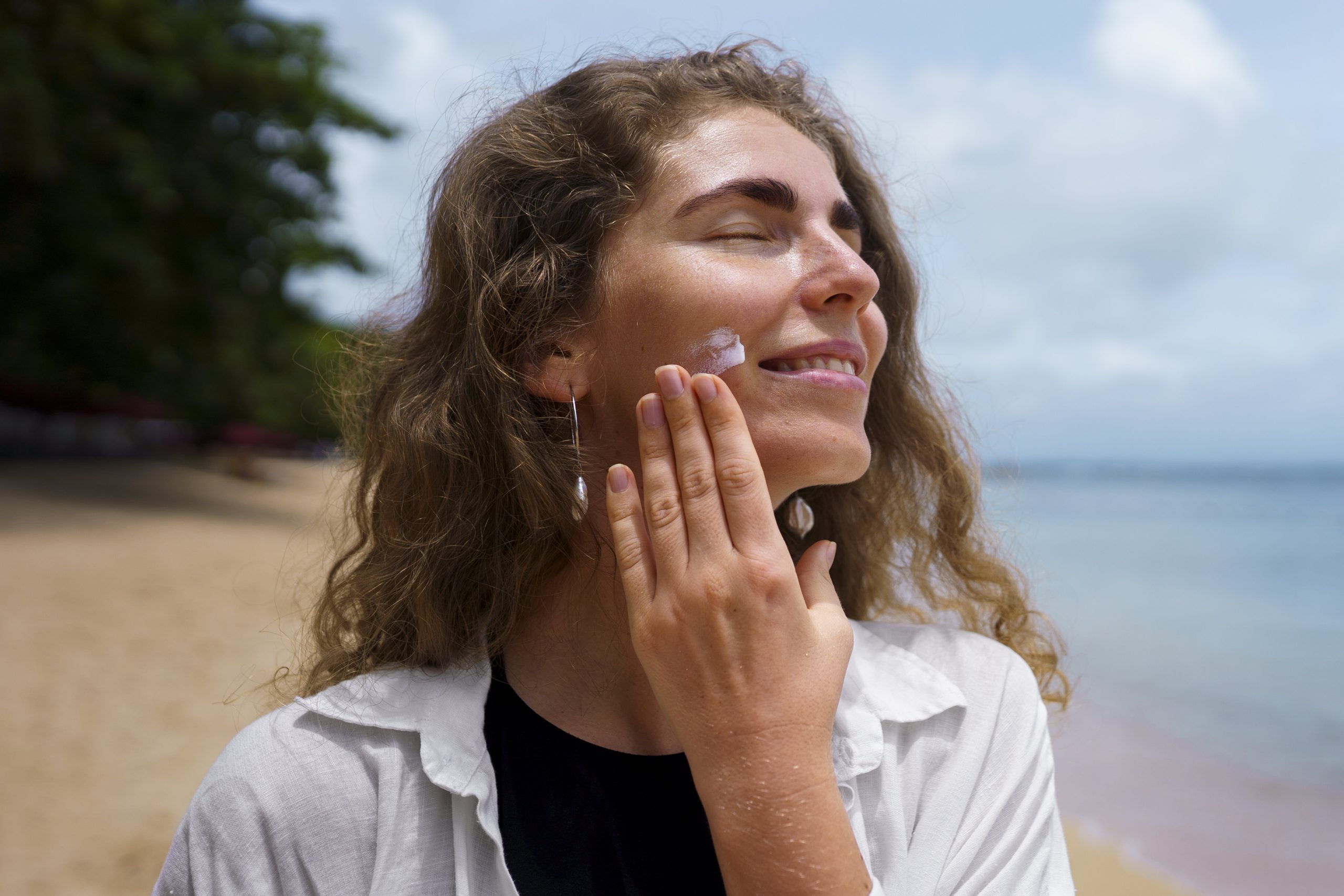
As we all know, the sun is incredibly strong in our region, and it’s absolutely essential to protect our skin from its harmful rays. With the many sunscreen options available, it can be overwhelming to know which one is the best for you.
Don’t worry, I am here to provide you with some straightforward tips for selecting the most suitable SPF for your skin.
Key Takeaways:
- Understand your skin type: It’s important to know your skin type before choosing a sunscreen. If you have oily skin, opt for oil-free formulas, and if you have dry skin, look for moisturizing sunscreens.
- Look for broad-spectrum protection: Choose a sunscreen that offers protection against both UVA and UVB rays to prevent sunburn, premature aging, and skin cancer.
- Consider the SPF level: In an Aussie climate, opt for a sunscreen with an SPF of at least 30 to provide adequate protection against the harsh sun.
- Water-resistant formula: Look for a sunscreen that is water-resistant, especially if you plan to swim or sweat, to ensure it stays effective for longer periods of time.
- Reapply regularly: Remember to reapply sunscreen every two hours, or after swimming or sweating, to maintain its effectiveness and keep your skin protected.
Sun Protection Factor (SPF) Basics
The Sun Protection Factor (SPF) is a measure of how well a sunscreen will protect skin from UVB rays, the kind of radiation that causes sunburn, damages skin, and can contribute to skin cancer.
It is important to understand the basics of SPF in order to make an informed decision when selecting a sunscreen for the Australian climate.
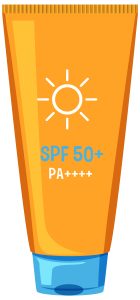
A protection sunscreen on white background illustration
Deciphering SPF Numbers
Deciphering SPF numbers can be a bit confusing, but it’s actually quite simple.
The SPF number indicates how long it will take for UVB rays to redden your skin when using the product compared to the amount of time without any sunscreen.
For example, if you normally get sunburned in 10 minutes, an SPF 15 should theoretically protect you for 150 minutes. However, it’s important to note that this is not an exact science.
Many factors, such as sweating, swimming, and simply not applying enough sunscreen, can reduce the effectiveness of the SPF.
Broad-Spectrum Sunscreens and Their Importance
When choosing a sunscreen, always select a broad-spectrum sunscreen. This type of sunscreen protects against both UVA and UVB rays. UVA rays can prematurely age your skin, causing wrinkles and age spots, while UVB rays can burn your skin.
Both contribute to the development of skin cancer.
Using a broad-spectrum sunscreen can help prevent sunburn, reduce the risk of skin cancer, and help prevent early signs of skin aging.
When shopping for sunscreen, look for products labeled as “broad-spectrum” to ensure you are getting the most comprehensive protection.
What are the Factors Influencing Your SPF Needs
While choosing the right SPF for your skin is crucial, consider the various factors that can influence your SPF needs.
Here are some key factors to keep in mind:
- Skin type.
- Climate and environmental conditions.
- Time of day and UV index.
- Outdoor activities.
- Medication and skin sensitivities.
Knowing how these factors affect your skin and sunscreen effectiveness can help you make informed decisions about choosing the right SPF for you.
Skin Type and SPF Selection
Individuals with fair or sensitive skin are more susceptible to sunburn and require a higher SPF, whereas those with olive or darker skin may still need SPF, but not as high.
Assess your skin type and choose an SPF that aligns with your level of sensitivity.
For example, if you have oily skin, opt for a non-comedogenic sunscreen to prevent clogged pores.
Environmental Influences on SPF Effectiveness
Aside from skin type, environmental factors can also impact the effectiveness of your sunscreen.
For instance, extreme heat or humidity can cause your sunscreen to sweat off more easily, requiring more frequent reapplication. If you’re spending time near water or snow, keep in mind that UV rays can reflect off these surfaces, increasing your exposure. Additionally, altitude can also play a role in UV exposure, so keep this in mind when choosing your SPF.
Sunscreen Formulations
Now, let’s talk about the different formulations of sunscreen available in the market.
Understanding the differences between creams, lotions, gels, and sprays can help you choose the right sunscreen for your needs.
Creams, Lotions, Gels, and Sprays
When it comes to sunscreen formulations, there are several options to choose from.
Creams and lotions are the most common and are suitable for all skin types. They are easy to apply and provide a good level of protection.
Gels are lightweight and are a great option for oily or acne-prone skin.
Finally, sprays are convenient for application, especially on hard-to-reach areas. However, they can be tricky to apply evenly and may not provide as thorough coverage as creams and lotions.
When choosing a sunscreen formulation, consider your skin type and ease of application to find the best option for you.
Water Resistance and Sweat Resistance
When selecting a sunscreen, it’s important to consider its water and sweat resistance, particularly in the Aussie climate.
Look for sunscreens that are labeled as “water-resistant” or “sweat-resistant” for added protection during outdoor activities.
Keep in mind that even water-resistant sunscreens need to be reapplied every 80 minutes, especially if you are swimming or sweating heavily.
It’s important to choose a sunscreen that can withstand the outdoor conditions in Australia, where the sun’s rays can be particularly harsh. Remember, reapplying sunscreen regularly is crucial for maintaining protection throughout the day.
Application and Reapplication
To ensure you are adequately protected from the harsh Australian sun, proper application and reapplication of sunscreen are crucial. Failure to apply and reapply sunscreen correctly could result in sunburn, premature aging, and an increased risk of skin cancer.
Proper Sunscreen Application Techniques
When applying sunscreen, it’s important to do so generously and evenly across all exposed skin. I recommend using at least a shot glass-sized amount for the entire body.
Be sure to apply sunscreen 15 minutes before going outside to allow it to fully absorb into the skin.
Remember to cover often-missed areas such as the ears, feet, and the back of the neck. It’s also crucial to reapply sunscreen every two hours, or immediately after swimming or excessive sweating.
Reapplication Timelines for Maximum Protection
To maintain strong sun protection throughout the day, I advise reapplying sunscreen every two hours, no matter the SPF level.
If you are swimming or sweating heavily, it’s essential to reapply more frequently. Even if you are using water-resistant or sweat-resistant sunscreen, it still needs to be reapplied every 80 minutes for the best protection.
Common Misconceptions About Sunscreen
Your skin is your body’s largest organ and protecting it from the harsh Australian sun is crucial.
However, there are often misconceptions about sunscreen that can lead to inadequate protection.
In this section, I will address some of the most common myths and provide you with accurate information to help you make informed decisions about sun protection.
Debunking SPF Myths
Many people believe that a higher SPF (Sun Protection Factor) automatically means better protection.
However, this is not entirely true. While a higher SPF does offer more protection, the difference between SPF 30 and SPF 50 is marginal.
An SPF 30 blocks about 97% of UVB rays, while an SPF 50 blocks around 98%, so the increase in protection is minimal. It’s also important to note that no sunscreen can provide 100% protection, regardless of the SPF.
Another common misconception is that you only need sunscreen on sunny days.
In reality, UV rays can penetrate cloud cover, so you should wear sunscreen every day, regardless of the weather.
UV rays are also reflected off surfaces such as sand, water, and snow, so you can still be exposed even in the shade.
Clearing Up Confusion About Sunscreen Expiry and Storage
There is often confusion about the expiry date of sunscreen and how it should be stored. Many people assume that sunscreen lasts forever, but in reality, it does have an expiration date.
Expired sunscreen may not provide adequate protection, so it’s important to check the expiry date and replace it as needed.
Additionally, sunscreen should be stored in a cool, dry place and kept out of direct sunlight.
Exposure to high temperatures and sunlight can degrade the ingredients and reduce the effectiveness of the sunscreen. It’s also important to shake the bottle before use and reapply sunscreen every two hours, or more frequently if swimming or sweating.
Beyond Sunscreen – Total Sun Safety Strategies
Keep in mind that while sunscreen is an essential tool for protecting your skin from the sun, it’s just one part of a comprehensive sun safety strategy. There are other steps you can take to minimize your risk of sunburn, premature aging, and skin cancer.
Protective Clothing and Accessories
When it comes to sun protection, clothing is your first line of defense. Look for clothing with a UPF (Ultraviolet Protection Factor) rating to ensure it effectively blocks out harmful UV rays.
Wide-brimmed hats, sunglasses, and UV-protective clothing can all offer extra protection for your skin and eyes.
A wide-brimmed hat can protect your face, neck, and ears, while sunglasses with 100% UV protection can help shield your eyes from harmful UV rays.
When planning your outdoor activities, consider covering up with long sleeves, pants, and a hat to limit your sun exposure.
Seeking Shade and Planning Around Peak UV Times
Another key strategy for sun safety is to seek shade during the peak UV times, typically between 10 a.m. and 4 p.m.
If possible, plan your outdoor activities early in the morning or later in the afternoon to avoid the intense midday sun.
When you’re at the beach or another sunny area, bring along an umbrella or a pop-up tent to create your own shade.
It’s important to remember that UV rays can still reach you even when you’re in the shade, so combining shade with other sun protection measures is essential for keeping your skin safe.
Conclusion
With these considerations in mind, it’s clear that choosing the right SPF sunscreen for the Aussie climate is crucial for protecting your skin from the harmful effects of the sun.
Understanding your skin type, the intensity of UV radiation, and the activities you’ll be participating in will help you make an informed decision on which SPF to choose.
Remember to reapply your sunscreen every two hours, seek shade during peak sun hours, and wear protective clothing to further shield your skin from UV damage.
By taking these tips into account, you can confidently enjoy the Australian sun knowing that you’ve taken the necessary precautions to protect your skin.
As someone who has personally experienced the harsh Australian sun, I know the importance of selecting the right SPF sunscreen and following these guidelines.
Prioritising your skin’s health by choosing the right SPF sunscreen is a decision that will benefit you in the long run, so don’t overlook its significance.
FAQ – How to Choose the Right SPF – Sunscreen Tips for the Aussie Climate
What is SPF and why is it important in the Aussie climate?
SPF stands for Sun Protection Factor, and it measures the level of protection a sunscreen offers against UVB rays. In the Aussie climate, where the sun is particularly strong, it is crucial to choose a high SPF to protect your skin from harmful UV rays.
What SPF should I look for in sunscreen for the Aussie climate?
It is recommended to use a sunscreen with a minimum SPF of 30 in the Aussie climate. However, for extended outdoor activities, consider using an SPF of 50 or higher for added protection.
What is broad-spectrum sunscreen and why is it important?
Broad-spectrum sunscreen protects the skin from both UVA and UVB rays. UVA rays can prematurely age the skin and UVB rays can cause sunburn. It is important to choose a broad-spectrum sunscreen to ensure comprehensive protection from both types of UV rays in the Aussie climate.
Should I choose a water-resistant sunscreen for the Aussie climate?
Yes, in the Aussie climate where outdoor activities often involve water, it is advisable to choose a water-resistant sunscreen. This will ensure that the sunscreen remains effective even during swimming or sweating.
How often should I reapply sunscreen in the Aussie climate?
Sunscreen should be reapplied every two hours, or more frequently if swimming or sweating. In the intense Aussie climate, frequent reapplication is crucial to maintain adequate sun protection.
Are there any specific sunscreen ingredients I should look for in the Aussie climate?
Look for sunscreens with ingredients such as zinc oxide and titanium dioxide, as these provide physical barriers against UV rays. Additionally, sunscreen with antioxidants like vitamin C and E can help protect the skin from free radical damage caused by sun exposure.
Should I still use sunscreen on cloudy days in the Aussie climate?
Yes, UV rays can penetrate through clouds, so it is important to use sunscreen even on cloudy days in the Aussie climate. UV rays are still present and can cause skin damage even when the sun is not visibly shining.
Food
Which of the Following Will Destroy Most Food Allergens?

Food allergens are substances found in certain foods that can trigger an immune response in individuals with food allergies. These allergens are typically proteins or protein fragments that the body mistakenly identifies as harmful, leading to various allergic reactions. Food allergies can range from mild symptoms like hives, itching, and digestive issues to severe and potentially life-threatening reactions, such as anaphylaxis.
The Importance of Addressing Food Allergens
With the increasing prevalence of food allergies, addressing food allergens has become a crucial concern for the food industry, healthcare professionals, and individuals living with these conditions. Effective methods to destroy or reduce the potency of food allergens can improve food safety, expand dietary options for those with allergies, and prevent potential life-threatening situations.
Common Food Allergens
Peanuts and Tree Nuts
Peanuts and tree nuts, such as almonds, walnuts, and cashews, are among the most common and severe food allergens. These allergens can cause severe reactions, including anaphylaxis, even with trace amounts.
Eggs
Eggs, particularly the proteins found in egg whites (ovalbumin and ovomucoid), are another major food allergen. Egg allergies are prevalent in children, although some individuals may outgrow this allergy over time.
Milk and Dairy Products
Milk and dairy products contain several allergenic proteins, including casein and whey. Milk allergies are common in infants and young children but can persist into adulthood for some individuals.
Wheat and Gluten
Wheat and gluten, the protein found in wheat, barley, and rye, can trigger allergic reactions in individuals with wheat allergy or celiac disease. Gluten intolerance and sensitivity are also widespread concerns.
Soy
Soy is a common allergen, particularly in infants and children. Soy-based products, such as soy milk, tofu, and soy sauce, can cause allergic reactions in sensitive individuals.
Fish and Shellfish
Fish and shellfish, such as shrimp, crab, and lobster, are among the most potent food allergens. These allergens can cause severe and potentially life-threatening reactions, even with minimal exposure.
Methods to Destroy Food Allergens
While complete elimination of food allergens is challenging, various methods can effectively reduce or destroy their potency, making foods safer for individuals with allergies.
Heating and Cooking
Temperature and Duration
Heat treatment is one of the most common and effective methods for reducing or destroying food allergens. Many allergens are proteins, and exposing them to high temperatures can denature or break down their structure, rendering them less allergenic or non-allergenic.
The temperature and duration required to destroy food allergens vary depending on the specific allergen and the food matrix. For example, milk and egg allergens can be effectively reduced or eliminated by cooking at temperatures above 70°C (158°F) for several minutes. Peanut and tree nut allergens may require higher temperatures, typically above 90°C (194°F), to achieve significant allergen reduction.
However, it’s important to note that some allergens, particularly those found in certain seeds and legumes, can be more resistant to heat treatment and may require additional processing methods or a combination of techniques.
Limitations
While heating and cooking can be effective in reducing or destroying food allergens, there are limitations to this method. Some heat-resistant allergens may remain allergenic even after extensive cooking. Additionally, certain foods or dishes may not be suitable for high-heat treatment due to quality or sensory considerations.
Chemical Treatments
Acidic Solutions
Exposing food allergens to acidic solutions, such as vinegar or citric acid, can potentially denature or break down the allergen proteins, reducing their allergenicity. This method is particularly effective for certain milk and egg allergens.
Enzymatic Treatments
Enzymatic treatments involve the use of specific enzymes that can selectively target and break down allergen proteins. For example, certain proteases (enzymes that break down proteins) have been shown to effectively reduce the allergenicity of milk, egg, and peanut allergens.
Irradiation
Ionizing Radiation
Ionizing radiation, such as gamma rays or electron beams, can be used to modify or degrade food allergens. This method works by disrupting the chemical bonds within the allergen proteins, potentially reducing their allergenicity.
The effectiveness of irradiation in destroying food allergens depends on factors such as the radiation dose, the type of allergen, and the food matrix. While this method has shown promising results in reducing allergens in certain foods, it may also affect other properties of the food, such as flavor, texture, and nutrient content.
Non-Ionizing Radiation
Non-ionizing radiation, such as ultraviolet (UV) light or pulsed light, has also been explored as a potential method for reducing or destroying food allergens. These methods can disrupt the structure of allergen proteins through photochemical reactions, rendering them less allergenic.
However, the effectiveness of non-ionizing radiation can vary depending on the specific allergen and food matrix, and further research is needed to fully understand its potential and limitations.
Processing and Manufacturing
High-Pressure Processing (HPP)
High-pressure processing (HPP) is a non-thermal food preservation technique that subjects foods to extremely high pressures, typically ranging from 400 to 800 megapascals (MPa). This process can cause structural changes in allergen proteins, potentially reducing their allergenicity.
HPP has shown promising results in reducing the allergenicity of various foods, including milk, eggs, and peanuts. However, the effectiveness can vary depending on the specific allergen, food matrix, and processing conditions.
Extrusion
Extrusion is a manufacturing process that involves forcing food materials through a die or small opening under high temperature and pressure. This process can potentially denature or degrade allergen proteins, reducing their allergenicity.
While extrusion has been explored for reducing allergens in certain foods, such as wheat and soy products, its effectiveness may depend on various factors, including the specific allergen, extrusion conditions, and food composition.
Factors Influencing the Effectiveness of Allergen Destruction
The effectiveness of any method in destroying food allergens can be influenced by several factors, including:
Food Matrix and Composition
The food matrix and composition can impact the accessibility and susceptibility of allergens to various treatments. For example, allergens present in complex food matrices or surrounded by other food components may be more resistant to certain methods.
Allergen Concentration
The concentration of allergens in a food can influence the effectiveness of the destruction method. Higher concentrations of allergens may require more intensive or prolonged treatments.
Processing Conditions
Specific processing conditions, such as temperature, duration, pressure, pH, and the presence of other substances (e.g., enzymes, chemicals), can significantly affect the efficacy of allergen destruction methods. Optimizing these conditions is crucial for achieving the desired level of allergen reduction or elimination.
Challenges and Considerations
While various methods exist for destroying or reducing food allergens, there are several challenges and considerations to address:
Regulatory Guidelines
Food allergen labeling and regulations vary across different countries and regions. It is essential to comply with the relevant guidelines and regulations when implementing allergen destruction methods in food production. Validation and monitoring procedures may be required to ensure the safety and accuracy of allergen claims.
Food Safety and Quality
Certain methods for destroying food allergens, such as chemical treatments or irradiation, may potentially introduce new safety concerns or affect the overall quality and sensory properties of the food. It is crucial to carefully evaluate the impact of these methods on food safety, nutritional value, and consumer acceptance.
Regulatory Guidelines
Food allergen labeling and regulations vary across different countries and regions. It is essential to comply with the relevant guidelines and regulations when implementing allergen destruction methods in food production. Validation and monitoring procedures may be required to ensure the safety and accuracy of allergen claims.
Food Safety and Quality
Certain methods for destroying food allergens, such as chemical treatments or irradiation, may potentially introduce new safety concerns or affect the overall quality and sensory properties of the food. It is crucial to carefully evaluate the impact of these methods on food safety, nutritional value, and consumer acceptance.
Consumer Acceptance
While reducing or eliminating food allergens can expand dietary options for individuals with allergies, consumer acceptance of the methods used and potential changes in food properties should be considered. Transparent communication and education about the safety and efficacy of allergen destruction methods may be necessary to gain consumer trust and confidence.
People Also Read:
Conclusion
Destroying food allergens is a complex challenge that requires a combination of various methods and careful consideration of factors such as the specific allergen, food matrix, processing conditions, and regulatory guidelines. While no single method can eliminate all allergens, the techniques discussed, including heat treatment, chemical treatments, irradiation, and advanced processing methods, offer promising solutions for reducing the allergenicity of foods.
Effective allergen destruction can improve food safety, expand dietary options for individuals with food allergies, and facilitate the development of new products that meet the needs of this growing consumer segment. However, it is crucial to strike a balance between allergen reduction and maintaining food quality, safety, and consumer acceptance.
Ongoing research and collaboration between the food industry, regulatory bodies, and scientific communities are essential to continually refine and optimize allergen destruction methods, ensuring a safer and more inclusive food supply for all.
FAQs
Can cooking completely eliminate all food allergens?
While cooking and heat treatment can effectively reduce or destroy many food allergens, it is important to note that some allergens may be more resistant to heat and may require additional processing methods or a combination of techniques. Complete elimination of allergens through cooking alone may not be possible for certain foods or allergens.
Are chemical treatments safe for destroying food allergens?
Chemical treatments, such as the use of acidic solutions or enzymes, can be effective in reducing or destroying food allergens. However, it is crucial to ensure that these treatments are carefully controlled and comply with food safety regulations. Any residual chemicals or byproducts should be within safe limits and not pose additional health risks.
Can irradiation affect the nutritional value of food?
Irradiation, particularly ionizing radiation, can potentially affect the nutritional value of food by degrading certain vitamins and other nutrients. The extent of nutrient loss depends on factors such as the radiation dose, food composition, and storage conditions. Careful consideration and monitoring of potential nutrient losses are necessary when using irradiation for allergen destruction.
Are there any risks associated with high-pressure processing (HPP) for allergen reduction?
High-pressure processing (HPP) is generally considered a safe and effective method for reducing food allergens. However, it is important to ensure that the processing conditions are properly controlled and validated. Potential risks may include the introduction of contaminants or the formation of undesirable compounds if the processing parameters are not optimized.
How can consumers identify products that have undergone allergen destruction processes?
Regulatory bodies and food labeling guidelines play a crucial role in informing consumers about the allergen status of food products. Products that have undergone allergen destruction processes should be clearly labeled with accurate and transparent information about the methods used and the potential presence of residual allergens.
Health
Zepp Health Launches Zepp OS 3.5 with Zepp Flow™

Zepp Health Corporation (“Zepp Health”) (NYSE: ZEPP), a global leader in smart wearables and health technology, today announces a significant stride in wearable intelligence with the introduction of Zepp OS 3.5, featuring Zepp Flow™. This revolutionary enhancement brings a whole new level of interaction to wearable devices, marking a pioneering advancement in the industry, making Zepp Health’s Amazfit smartwatches the first to have a fully integrated Natural-Language User Interface (LUI) powered by LLM AI in its operating system.
Zepp Flow™, the centerpiece of Zepp OS 3.5, represents much more than just a voice assistant; it embodies a paradigm shift in user experience. Inspired by the concepts of balance and harmony, the name “Flow” encapsulates the smooth and intuitive nature of user interaction. Much like the effortless movement of water or the focused energy experienced in a state of “flow,” Zepp Flow™ facilitates a seamless connection between users and their devices, allowing for natural, uninterrupted interaction.
Designed to understand natural language, Zepp Flow™ eliminates the need for predefined commands or keywords, enabling users to express their intentions freely. By intuitively interpreting user requests, whether it’s initiating a workout or managing daily tasks, Zepp Flow™ streamlines the user experience, making it more intuitive and effortless than ever before. This breakthrough represents a significant leap towards a future where artificial intelligence seamlessly integrates into everyday life, particularly in health, fitness, and productivity domains.
A Future of Connectivity and Intelligence
With a global presence spanning over 90 countries and a user base exceeding 42 million, Zepp Health, through its renowned brands like Amazfit, is committed to redefining the way individuals approach their health and wellness. By harnessing advanced technology and fostering collaboration across its brand portfolio, Zepp Health is at the forefront of innovation, shaping the future of wearable technology.
Through Zepp Flow™, Zepp Health continues to push the boundaries of wearable technology, empowering users to seamlessly integrate smart devices into their daily lives. Zepp Flow™ represents a significant milestone in wearable intelligence, embodying the seamless integration of AI into people’s everyday lives. “With dedicated R&D teams across North America, Europe, and Asia, we are committed to driving innovation and delivering unparalleled user experiences, to bring intelligent healthcare solutions empowering people to take control of their well-being,” said Wayne Huang, CEO of Zepp Health. He added, “Zepp Flow™ epitomizes our dedication to unified connectivity and intelligent functionality throughout our ecosystem. Expanding its reach from the Zepp OS on smartwatches to the Zepp App on smartphones, and integrating with natural language processing, Zepp Flow™ asserts itself as the omnipresent AI within our system. Whether it resides on your smartwatch, earbuds, our app on your phone, or in the cloud, Zepp Flow™ guarantees a seamless and intuitive experience across all platforms.”
How Zepp Flow™ Works
Zepp Flow™ boasts several key features that redefine user experience:
- Natural Conversation: Unlike traditional voice assistants, Zepp Flow™ allows users to express themselves freely without requiring specific command phrases.
- Efficient Recognition: Zepp Flow™ rapidly and accurately recognizes user speech, ensuring a smooth and responsive interaction.
- Precise Understanding: Users need only describe what they want, and Zepp Flow™ will recognize their intent and provide the most appropriate response.
Availability
- Zepp OS 3.5 and Zepp Flow™ will be supported on the Amazfit Balance in the US, Canada, United Kingdom and Republic of Ireland, via a firmware update on February 26th.
- Amazfit Balance users in France, Italy, Germany, Spain, Liechtenstein, Luxembourg, Monaco, Switzerland, Andorra, Austria, Belgium, and San Marino will be able to upgrade to Zepp OS 3.5 on May 1st.
- The Amazfit Cheetah series, Amazfit Falcon, and Amazfit T-Rex Ultra will receive this update on a rolling basis, starting from May 28th through until June 11th. The Amazfit Active will be upgraded on June 20th.
About Zepp Health Corporation
Zepp Health (NYSE:ZEPP), a global smart wearable and health technology leader, empowers users to live their healthiest lives by optimizing their health, fitness, and wellness journeys through its leading consumer brands, Amazfit, Zepp Clarity, and Zepp Aura. Powered by its proprietary Zepp Digital Health Management Platform, which includes the Zepp OS, AI chips, biometric sensors, and data algorithms, it delivers cloud-based 24/7 actionable insights and guidance to help users attain their wellness goals. To date, Zepp Health has shipped over 200 million units and its products are available in 90+ countries. Founded in 2013, Zepp Health has offices across the Americas, EMEA, and APAC regions. For more information, visit www.zepp.com.
Health
Huawei Launches Medical Tech Solution for Intelligent Healthcare

During MWC Barcelona 2024, Huawei officially launched its Medical Technology Digitalization Solution as part of its effort to lead the digital and intelligent upgrade of the healthcare industry.
David Shi, Vice President of Huawei’s ICT Marketing & Solution Sales, said, “To accelerate the intelligent upgrade of the healthcare industry, Huawei, as an ICT provider, builds a secure and sustainable digital foundation for the healthcare industry and helps it go intelligent.” He emphasized that together with partners, Huawei aims to help its customers succeed.
Thousands of images read in seconds, accelerating the digital & intelligent upgrade of medical technology services
The medical technology digitalization solution focuses on pathology and medical imaging. The solution has three competitive advantages: SmartCache intelligent pre-reading, which improves image reading efficiency and achieves zero latency during data retrieval; the Huawei-developed compression algorithm, which saves 30% storage and 70% cabinet space; and video-network synergy, which supports consistent remote diagnosis to promote hierarchical diagnosis and treatment.
This solution has been applied in many healthcare institutions around the world. Huawei helped Ruijin Hospital build a digital smart pathology department, which enables the concurrent access of 1000+ pathological sections within one second. This improved the retrieval speed by 80 times. Huawei helped the Health Bureau of Longgang District, Shenzhen build a regional medical imaging platform. It supports the interconnection and sharing of medical image data among 12 hospitals, one-click access to image reports, and mutual recognition of cross-hospital examinations.
Deep scenario-technology integration and innovative upgrade of three solutions
Huawei leverages cloud-network-edge-device synergy to dig deep into service scenarios and upgrade three major solutions.
The Smart Ward Solution looks to Wi-Fi, IoT, and multi-band convergence in one network to support data collection for more than 400 terminals, delivering high-quality diagnosis and treatment.
The Smart Hospital Campus Solution uses the digital platform to streamline campus operations subsystems, achieving all-scenario intelligent services and E2E refined operations.
The One Hospital, Multiple Branches Solution builds an integrated cloud-network-edge resource base to implement unified management as well as diagnosis and treatment services of the same quality across different hospital branches.
So far, Huawei has served over 5000 hospitals and medical institutions in more than 110 countries and regions.
-
Business2 years ago
How to Earn Money Writing Blog Posts in 2023: A Comprehensive Guide
-
Games2 years ago
How does Dead Space Remake enhance the Horror Classic of 2008
-
Video2 years ago
Everything you need to know about Starfield
-
Health2 years ago
How is Yoga and Pilates Bridging the Gap Between your Mind and Body
-
Health2 years ago
Migraine medications significantly improve the quality of life
-
World2 years ago
Swiss Pharma Powerhouse Acino Expands into Latin America with M8 Pharmaceuticals Acquisition
-
Self Improvement2 years ago
Enhancing Relationships and Emotional Intelligence Through Mindfulness Meditation
-
Business2 years ago
How to Use LinkedIn to Build Your Professional Brand




